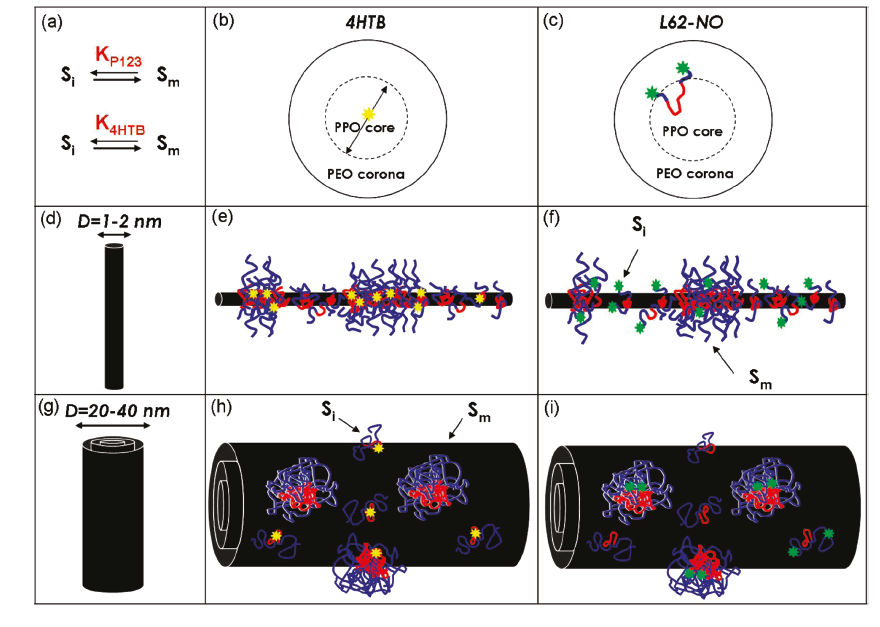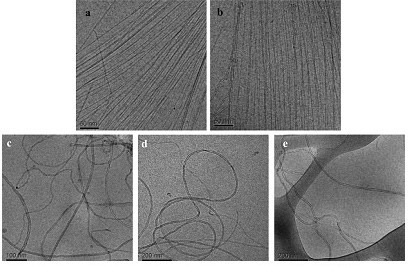Induced assembly in hybrid systems
Nano-inclusions dispersed within a solution of self assembling polymers or surfactants were observed to modify the phase behavior of the hosting medium. This behavior is fundamentally different from that of micrometric and large colloidal particles with typical diameters in the range of several hundreds of nanometers. The origins of the observed cooperative behavior are not yet clear. In our studies we investigate the interaction mechanisms triggered by dimensional matching or mismatching between nanoinclusions and surfactant molecules . Over the last few years we have investigated the assembly of molecules and nano-particles in polymers-nanoparticles systems at the water air interface CHEM. COMMUN. 2010, J.POLYM.SCI: POLYM.PHYS B 2011, carbon-nanotubes-induced assembly of surfactant molecules into liquid-crystalline –like structures CHEM.COMM. 2008, SMALL 2008, SOFT MATTER, 2009, SOFT MATTER 2010, and polymer-carbon-nanotubes interactions MACROMOLECULES 2007, LANGMUIR 2008, Macromolecules 2010
Carbon-nanotubes induced assembly of polymers: In a detailed experimental investigation, carried out in collaboration with Prof. Daniella Goldfrab from the Weizmann Institute, Israel, we combined thermal measurements and spin-probe electron paramagnetic resonance (EPR) to map the behavior of a hybrid system comprising of carbon nanotubes and self-assembling polymers in aqueous media. Novel hybrid structures and unique behaviors were observed due to coupling between the components. The degree of coupling was found to depend on the size-matching between the diameter of the native micelles and the nano-structures. The study highlights the role of dimensionality in combined assembly of polymers and nano-structures and offers new possibilities for the engineering of nano-structured materials. 
For details see Langmuir 2008 (3773), Langmuir 2008 (4625), Macromolecules (2010)
When polyelectrolytes induce the assembly of SWNT
We observed the formation of nematic-like islands of single walled carbon nanotubes (SWNT) in polystyrene sulfonate (PSS) dispersions confined into nanometrically thin films. LANGMUIR, 2014
The SWNT are observed to assemble into orientetionaly ordered phases where the inter-tube distance as measured via transmission electron microscopy at cryogenic temperatures, matches the polyelectrolyte's bulk correlation length deduced from x-ray scattering. The microns-long islands of orientationaly ordered carbon nanotubes are observed in both SWNT and double walled carbon nanotubes (DWNT) but not in multi walled carbon nanotubes (MWNT). Our findings suggest that the orientational ordering may result from coupling between confinement of the polymer-wrapped SWNT and DWNT and the micro-structure of the solvated polyelectrolyte.


